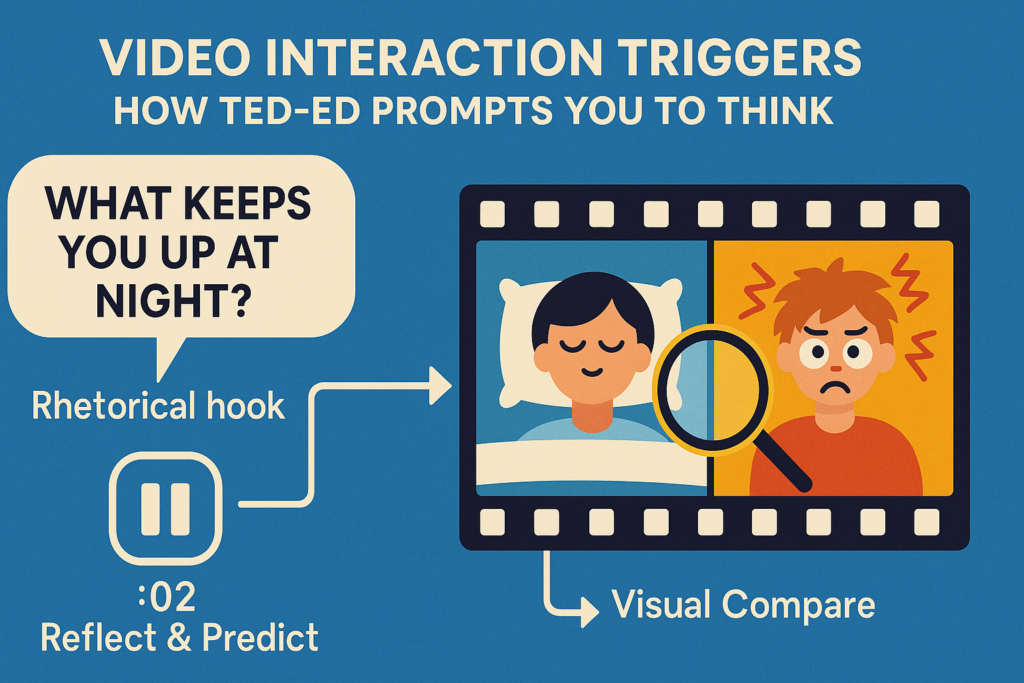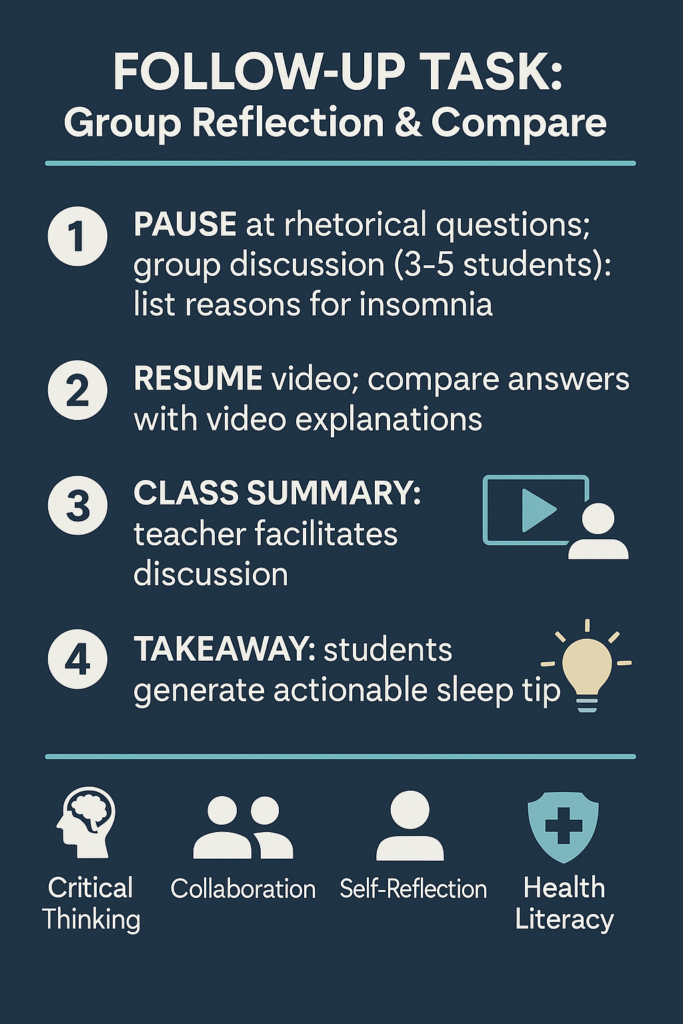1.How does the creator of the video naturally prompt students to pause, react, or check their understanding, and how does it nudge them to do so?
In this video, the creator presents several examples of how stress, significant events, and profound contemplation can disrupt sleep. The creator uses an opening hook of rhetorical question to prompt viewers to reflect on their own reasons. Then the creator adopts a constructivist approach, building on those questions to explain why people experience insomnia.
I also noticed that “pause” is used frequently after an opening hook of a rhetorical question in the video. This is an effective technique because it encourages viewer engagement, prompting self-reflection and inspiring deeper thought. It serves as a form of user-generated interaction. This method of showing the video to the viewer can nudge them to reflect and have a better understanding of the topic.

2.What follow-up task would you propose? Specify the concept or skill or task that would help develop?
Since the video is well designed for educational purposes, the teacher could pause at the opening rhetorical questions. The teacher could use these questions to have students discuss in groups and list their answers. This approach encourages greater class participation. Giving students time to discuss allows them to reflect more deeply on the reasons and build stronger critical-thinking skills. After that, the teacher can play the rest of the video and let the students see the differences between their answers and the explanations the video provides.
After playing the video, the teacher can provide a concise summary of the insomnia and facilitate a discussion with the students regarding to their answers. As a result, students not only improve their understanding of insomnia but also learn how to enhance their sleep quality based on what they have learned.

3. How much work would this activity cause for the teacher? Could the activity be scaled for larger numbers of students?
In this activity, the teacher will alternate between being a participant and a moderator. At the beginning and end of the activity, the teacher will act as the moderator, and during the discussion phase the teacher will join different groups as a participant. Therefore, the workload will not be heavy and will be worthwhile to carry out in class.
However, this activity cannot be conducted on a large scale because it has certain limitations. The activity emphasizes interactivity, so having fewer participants increases both engagement and participation. For example, groups of three to five students—forming roughly three to five groups in total—would optimize learning efficiency for this activity.
4. How could the video have been designed to generate more or better activity from viewers or students?
Overall, I think this video is well designed for educational purposes. The only suggestion I have is that, since the target viewers might be younger students, the video should pause longer on the open questions so viewers have more time to think. Furthermore, I believe the video plays a supporting role and helps teachers; thus, it doesn’t have to provide absolutely complete answers, leaving room for teachers to address students’ questions.
Reference
TED-Ed channel on YouTube: https://www.youtube.com/watch?v=j5Sl8LyI7k8
Leave a Reply